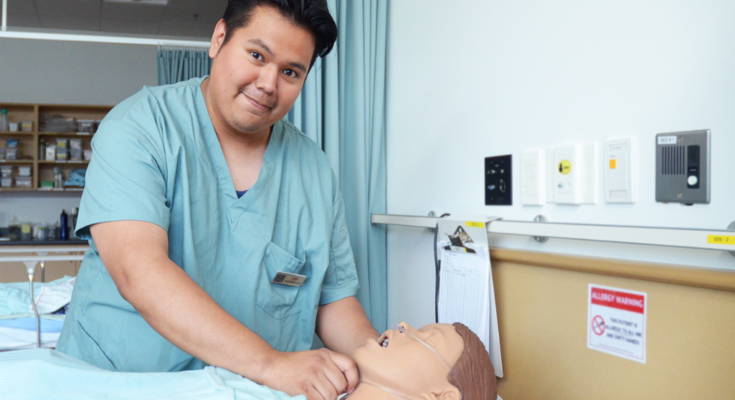By Dennis Cobbina
It’s two hours into my Sunday evening shift and as usual my client had run out of her prescription opioid medication hydrocodone, hydromorphone and duloxetine–all painkillers prescribed by her doctor.
She is desperate to get her hands on any of her pain medications. She yells: “Hey! In one hour, if I don’t take this pain drug get ready to have a dead body on your hands.” This reminded me of another client from a facility in Ossining New York. He matter-of-factly told me as if it was normal: “If you are going to take away my Oxy you better take me to the roof of the building and just push me.”
Across New York City in hospitals, clinics and in the homes of opioid drug addicts, CUNY students are working as home health care providers. They are heeding the call to help address the cause of nearly 70% of all overdoses in 2017 in the country–opioids.
In 2015, only one student from the Borough of Manhattan Community College graduated with a Health and Allied Sciences degree. In 2017, that number jumped to 45. At Brooklyn Community College, eight students graduated from the program in 2015. The number almost doubled in 2017 with 14 graduates. Overall there is an increase in the number of community college students graduating with an associate degree either in community health, public health, gerontology and school health, according to the CUNY Office of Institutional Research and Assessment data.
“Recent events such as the reemergence of infectious disease epidemics and the opioid crisis coupled with impending retirement of public health professionals has resulted in an increased demand for public health workers,’’ said Prof. Lesly Rennis, chairwoman of Department of Health and Allied Science at BMCC.
She said that workforce data shows that in the next decade 3.5 million new U.S. jobs will be created in the healthcare sector, most of which are entry-level and middle-skilled positions. BMCC’s public health program prepares students to fill this jobs, she said.
According to the Centers for Disease Control an average of 130 Americans die each day from opioid overdoses. In 2017, more than 70,200 people died from overdoses with opioid drugs. This means that more than five people in the United States will die in the next hour from an opioid overdose.
Opioids are used for pain alleviation and some patients gradually develop tolerance to these pain drugs and become addicts. They continuously take these opioids but reach a point where they have to take more of the same painkillers to receive the same affect. Unfortunately, this leads patients to overdoses and sometimes death.
As a concerned health major student at BMCC I want to educate the community about drug addiction and warn patients about over prescription of painkillers by doctors.
Patients suffer. They vomit, there is endless crying and the craziness that goes along with the addiction of withdrawal drives family members away to the point that some family members stop to care about their addicted loved ones. My patients’ exacerbating desperation makes both of us feel miserable and even hopeless because there is nothing else to do when there are no opioids to take. My patients feel like they just want to die.
At some point in my job, empathizing with my clients becomes meaningless. All I can do is have some hopeful conversation that everything will be alright which I do not believe deep down in my heart. Sometimes a bowl of their favorite ice cream that makes them forget about the drugs for even for a few minutes lessens the tension.

